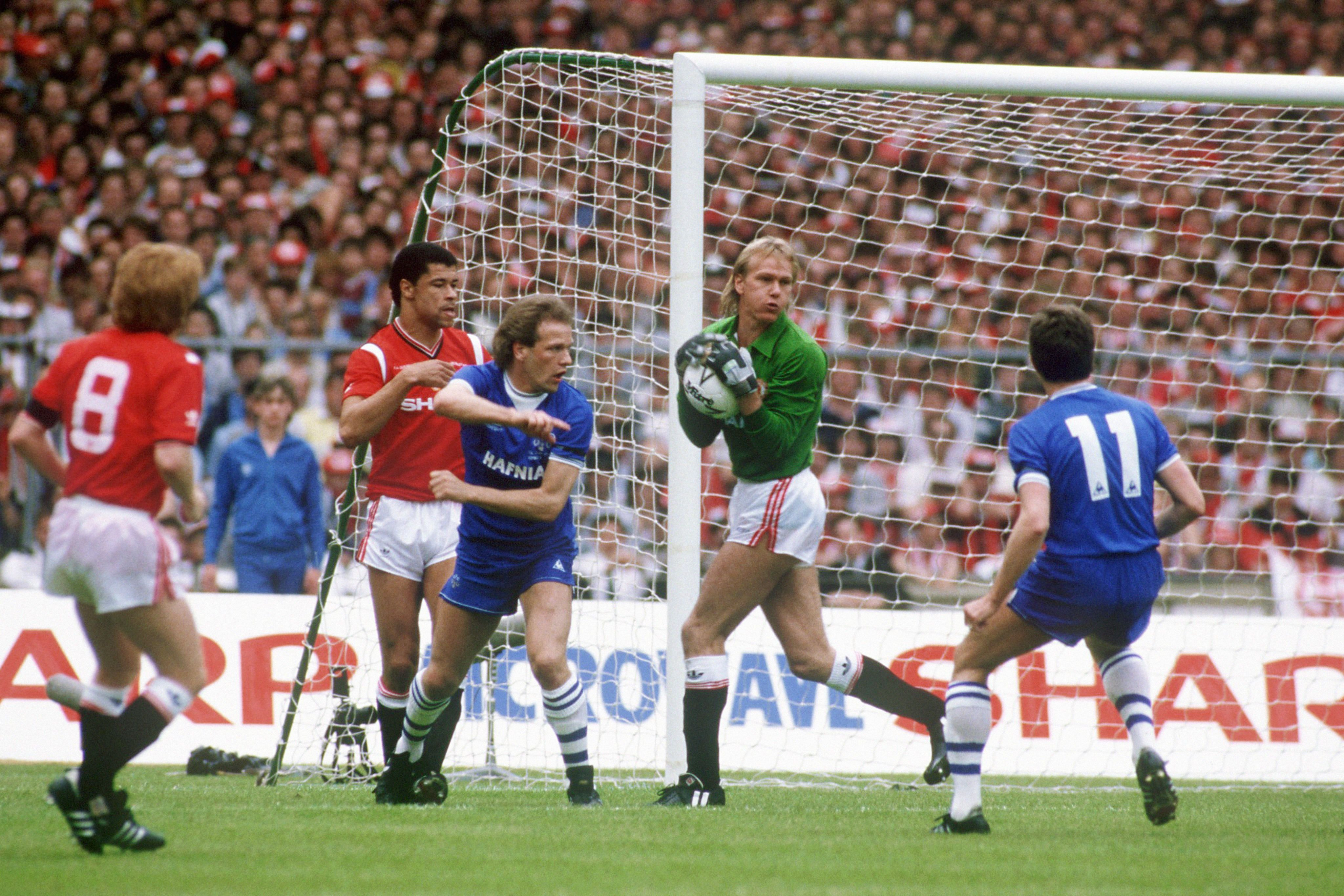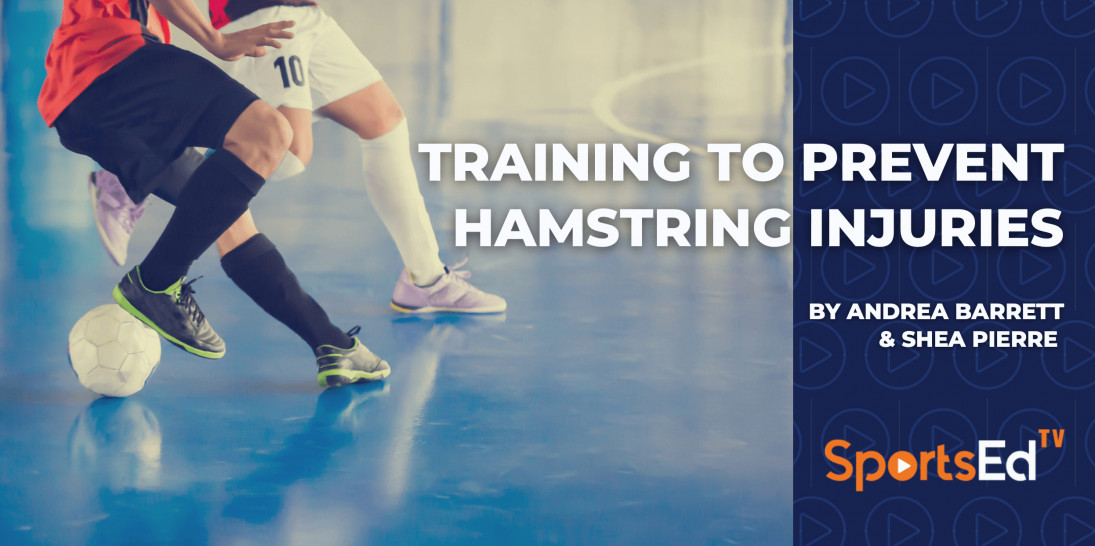Soccer
Welcome and thanks for visiting...

How To Pass In Soccer: 5 Essentials For The Perfect Pass

Take your game to the next level:
1. Sign up to our Soccer community
2. Select Upgrade
3. Enter Promo Code: S973MdhZ
4. Access our 100s of free resources to help you improve
How To Pass In Soccer?
5 Essentials For The Perfect Pass
There are many different ways to pass the soccer ball to your teammate, from using the instep of your foot for a short or medium distance pass (often called a “push pass”), to using the outside of your foot, for a long ball, to a through ball, to a pass with the heel, and so on. The “push pass”, a short to medium distance pass with the instep of your foot, is the most popular type of pass in soccer and one that is essential to practice at all levels from youth soccer to professional soccer, and for all positions from goalkeeper to forward. It allows players to move the ball between each other over short and medium distances with accuracy and speed, in a way that is easy for the teammate to control. Here we will look at the key aspects of the proper “push pass” technique.
1. Aim With Your Planted Foot
When you set your non-passing foot down to pass with your other foot, make sure that the toes of your planted foot point toward your target. This will help improve your accuracy. This allows for a natural motion where you pass along the line created by your standing foot, rather than passing across it or away from it (both of which are somewhat awkward motions that are harder to control). When practicing passing, take the time to check where your planted foot is pointed to get in the habit of naturally positioning it in the direction of your pass.
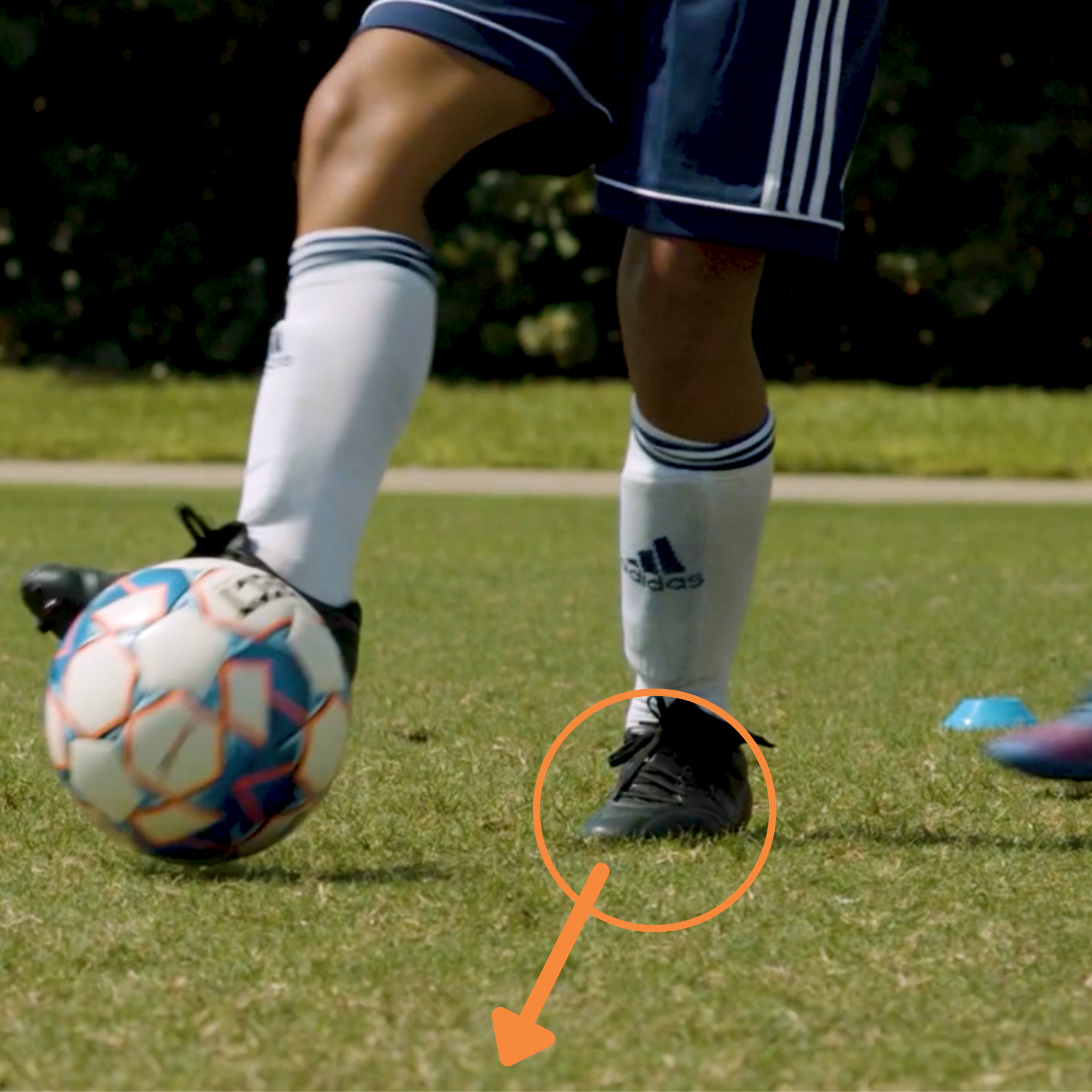
Aim with your planted foot
2. Open Your Passing Hip
As you take your leg back to pass the ball, the hip of your passing leg should open by rotating the leg outwards from the hip. This leads your foot to naturally point to the side, leaving the instep of your foot open for a flat contact with the ball that will send it straight in front of you without spin. Your passing foot should be at a 90-degree angle to your standing foot when contacting the ball. If your hip isn’t open enough, your foot may contact the ball at a less-than-90-degree angle which is likely to cause an inaccurate pass.
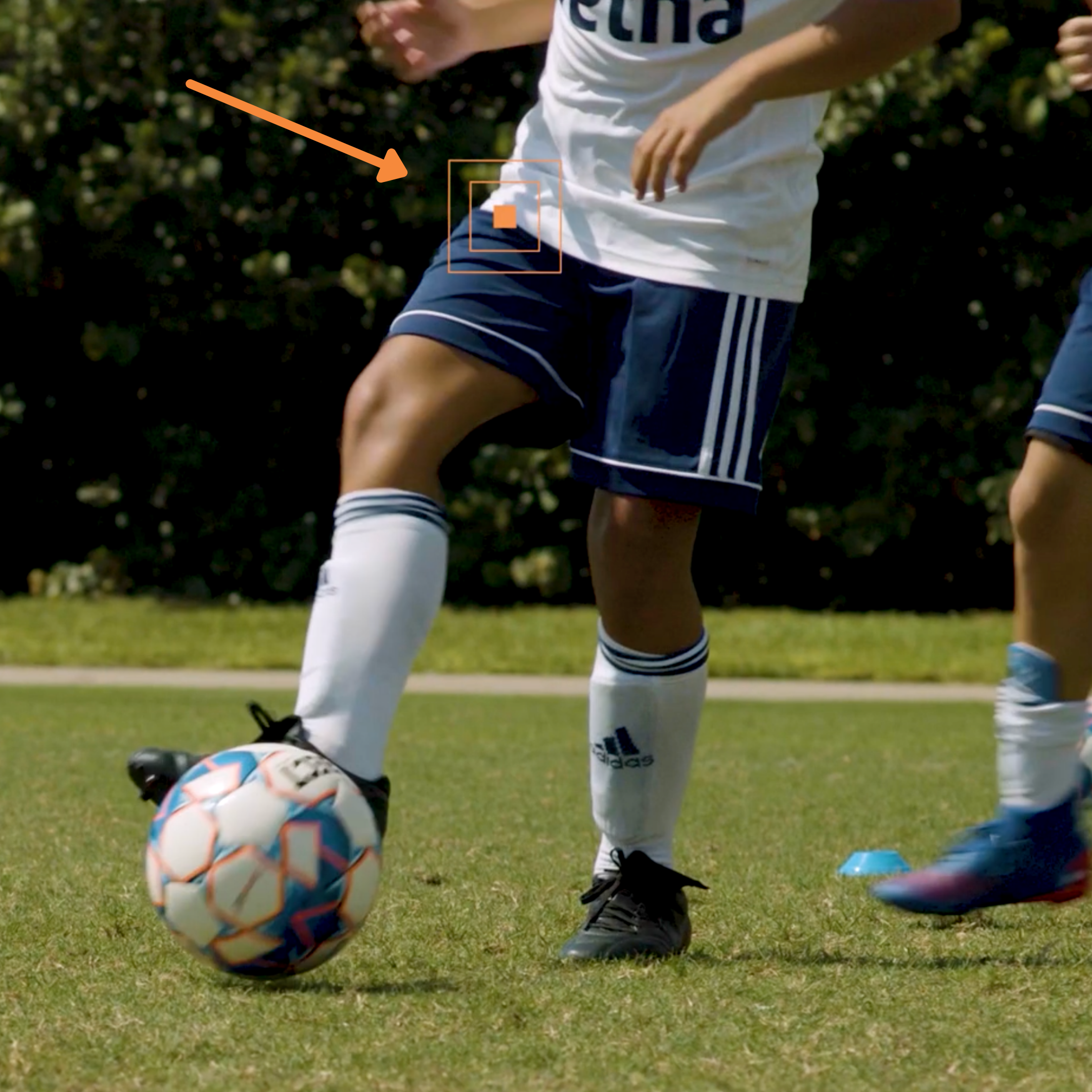 Open your passing hip
Open your passing hip
3. Position Your Body Over The Soccer Ball
Don’t lean back when performing a straightforward push pass, as that is likely to lift the ball and cause your pass to bounce. You want your pass on the ground so that it is easy for your teammate to control. You also don’t want to be reaching forward with your leg when you pass, as that will reduce your power and accuracy. By positioning your upper body directly over the ball when you connect with it, you are ensuring a firm connection with the ball and are less likely to lift it while passing.
4. Lock Your Ankle
Locking your ankle is an essential part of multiple techniques in soccer. For an instep pass, locking your ankle means flexing your passing foot at the ankle up and slightly back. Think of pulling your toes up, and then rotating them slightly to the outside. So if you’re locking your right ankle, your toes come up and then rotate slightly out to the right (you won’t be able to go very far to the right with just your ankle, which is why you also open your hip as the previous step explained). With your hip open and ankle locked, you’ll be contacting the ball flat and head-on with the instep of your foot, allowing for complete control over the pass and minimal spin.
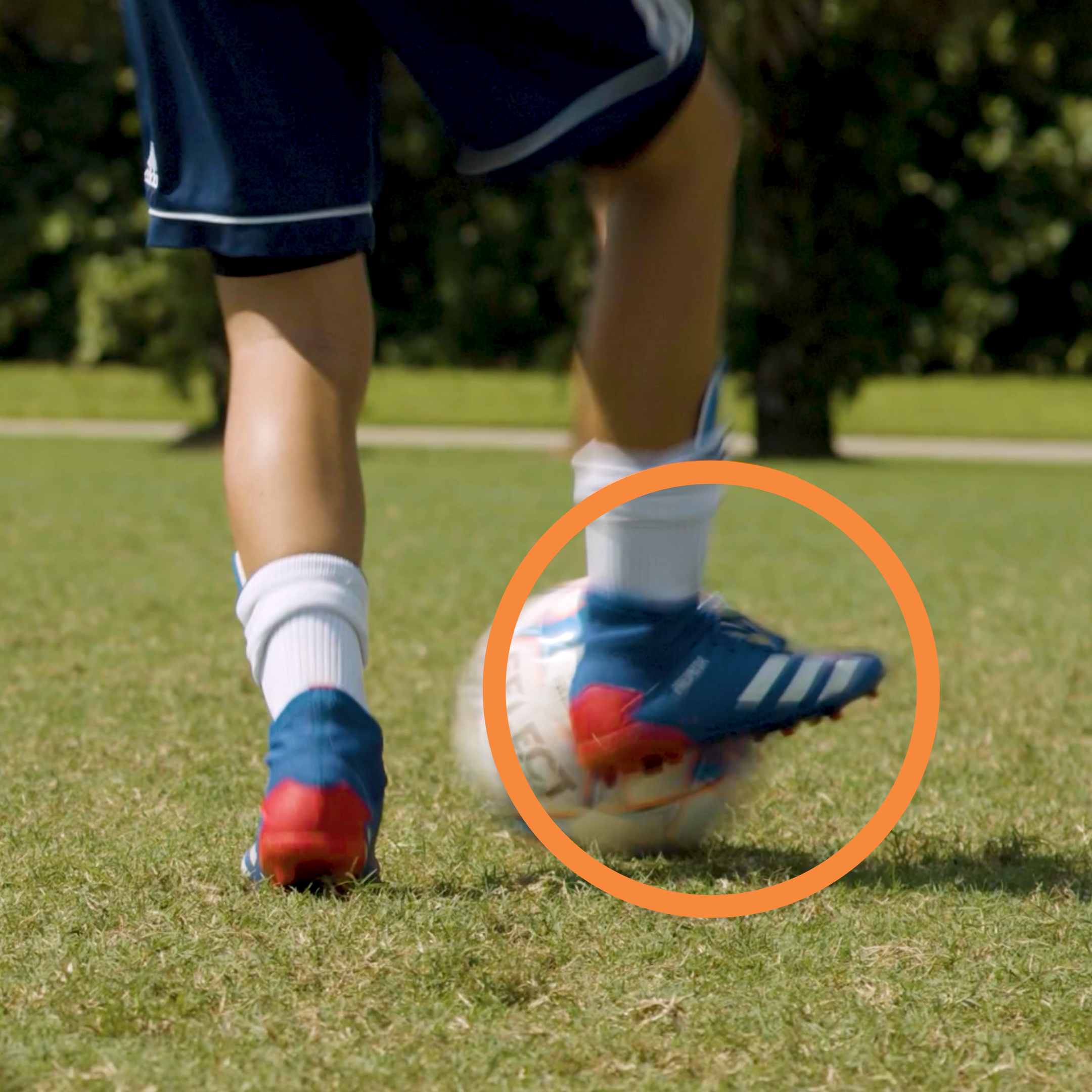 Lock your passing ankle when connecting with the ball
Lock your passing ankle when connecting with the ball
5. Contact The Middle Of The Ball
For an accurate and controlled push pass, contact the center of the ball. This means not off to one side, and also not the top or bottom of the ball. Common mistake players make is that they contact the bottom of the ball, and end up lifting it slightly off the ground. This results in a bouncing pass that is harder for their teammate to control. Focus on striking the middle and center of the ball for a firm pass that will remain on the ground.
 Contact the middle of the ball, highlighted by the green strip above, rather than the bottom of the ball
Contact the middle of the ball, highlighted by the green strip above, rather than the bottom of the ball
Passing is one of the first skills we learn while starting a beautiful game, however, it is one we should never stop improving. Even at the professional level, some of the best players, particularly in the midfield, are differentiated from the rest at that top level by their incredible passing ability. You can practice passing alone off a wall, or with a partner, and use a cone to challenge your accuracy and touch. Below are some examples of drills you can do to improve your passing and master the technique points described above.
Receiving With The Back Foot
Passing Fundamentals 1
Master The One-Touch Pass
Two-Touch Passing
Follow SportsEdTV Soccer on Facebook and Instagram to stay up-to-date with the latest content


